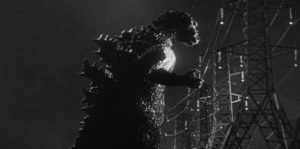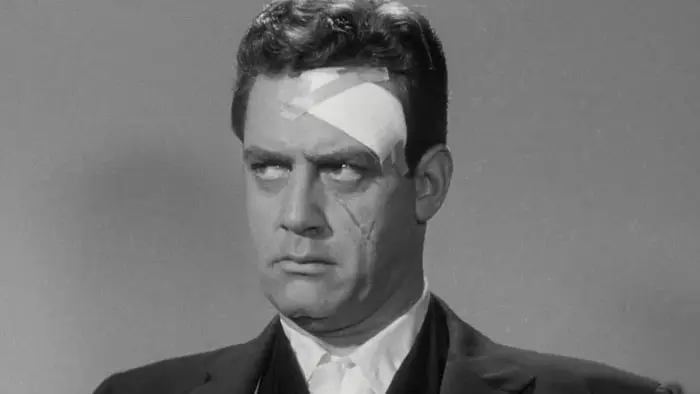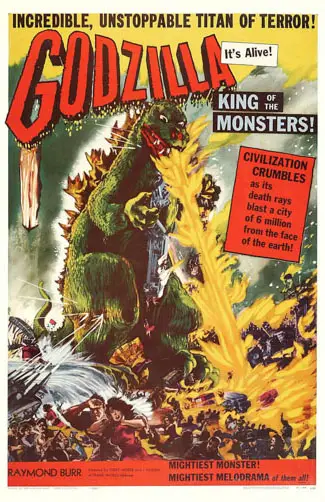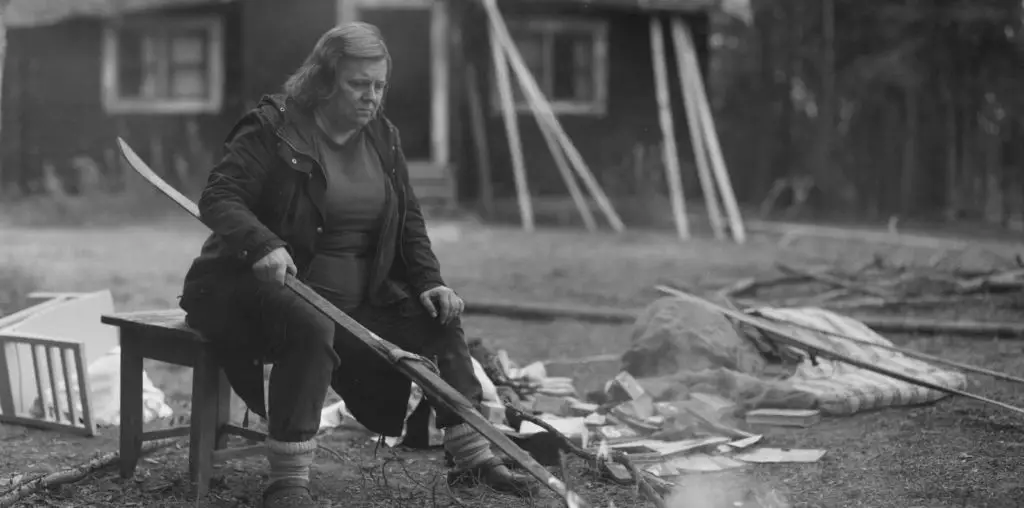
We’re jumping back into the way-back machine to 1956 to revisit the second first appearance of the monster of all monsters in the American-altered classic, Godzilla, King of the Monsters!—technically.
If you know the cinematic story, Godzilla is the Americanized version of the original 1954 kaiju film, Godzilla. To appeal to U.S. audiences, some places dubbed the original film into English. Scenes were then added with Raymond Burr and the body doubles of the original actors, and finally, Burr narrated to lend some much-needed exposition.
Our story follows an American reporter Steve Martin (Raymond Burr), whose plane was redirected to Tokyo after some strange natural occurrences that disabled his flight. While in Tokyo, Martin stumbles over the story of a sunken ship and the few survivors of that crew suddenly dying of shock when rescued.
With the help of a Japanese science and military team, including Dr. Yamane, Martin heads to Odo Island, where the natives tell him about the myth of the great sea monster known as “Godzilla,” who recently attacked the villagers during a recent sea storm. While on the island, Godzilla attacks the island, leaving large radioactive footprints in his wake.
With proof that Godzilla exists and was created with the testing of nuclear weapons, the military takes over, trying to kill the kaiju first with depth charges and then by shocking them to death with electrical traps. Nothing works, and their last chance is to use a device created by Dr. Yamane that is more devasting and inhuman to Godzilla than any nuclear weapon made to this point.

“…Martin stumbles over the story of a sunken ship and the few survivors of that crew suddenly dying of shock when rescued.”
Godzilla, King of the Monsters! is the story that began it all, laying the themes of Japanese kaiju that would endure for decades. From the start, we have the anti-nuke messaging and the dangers of nuclear proliferation. Godzilla and the other kaiju become the unintended consequences of the arms race.
Godzilla also tells the story of the clash between science and politics. Here, the military is hellbent on killing Godzilla, while science believes his appearance and death, though accelerated by man, are part of the natural order of life. The film lays out the importance of advanced modern science to save the world instead of being used to end it.
It’s also hard not to see the similarities between Godzilla’s devastation and the destruction of Hiroshima and Nagasaki. Godzilla captures the fear and anxiety of the past through the story of a giant monster.
Yes, Godzilla is a guy in a suit stomping on models. The acting could also be a bit more nuanced…authentic. Yet, in 1950, we saw the advancement in split-screen techniques and the advancements in creative editing that brought in a storyline about an American reporter that wasn’t there in the first place. If you didn’t know this fact, you might not notice, but the part of me that wants to know how the magic is done couldn’t help but notice that all the scenes shot outdoors were from the original, and the ones shot on a set are not. This is clear when the story is on the island.
That said, Godzilla will always be a classic because it was the first, and no matter how much Hollywood can make it look better, Hollywood will do what Hollywood does and discard everything great about the original Godzilla, like explore the philosophical nature of our extreme actions and focus in on what devastation can do to a community. Instead, let’s insert B-Level movie stars and CG effects that look like cartoons and cash in on an IP it doesn’t understand. As good as Godzilla is, Hollywood hasn’t changed since the 1950s. It’s tolerable in this case because we understood by it happened. The problem has worsened today.
If you are looking for a modern take on Godzilla, King of the Monsters!, you have Godzilla Minus One to show you how remakes do it right.

"…Godzilla captures the fear and anxiety of the past through the story of a giant monster."

